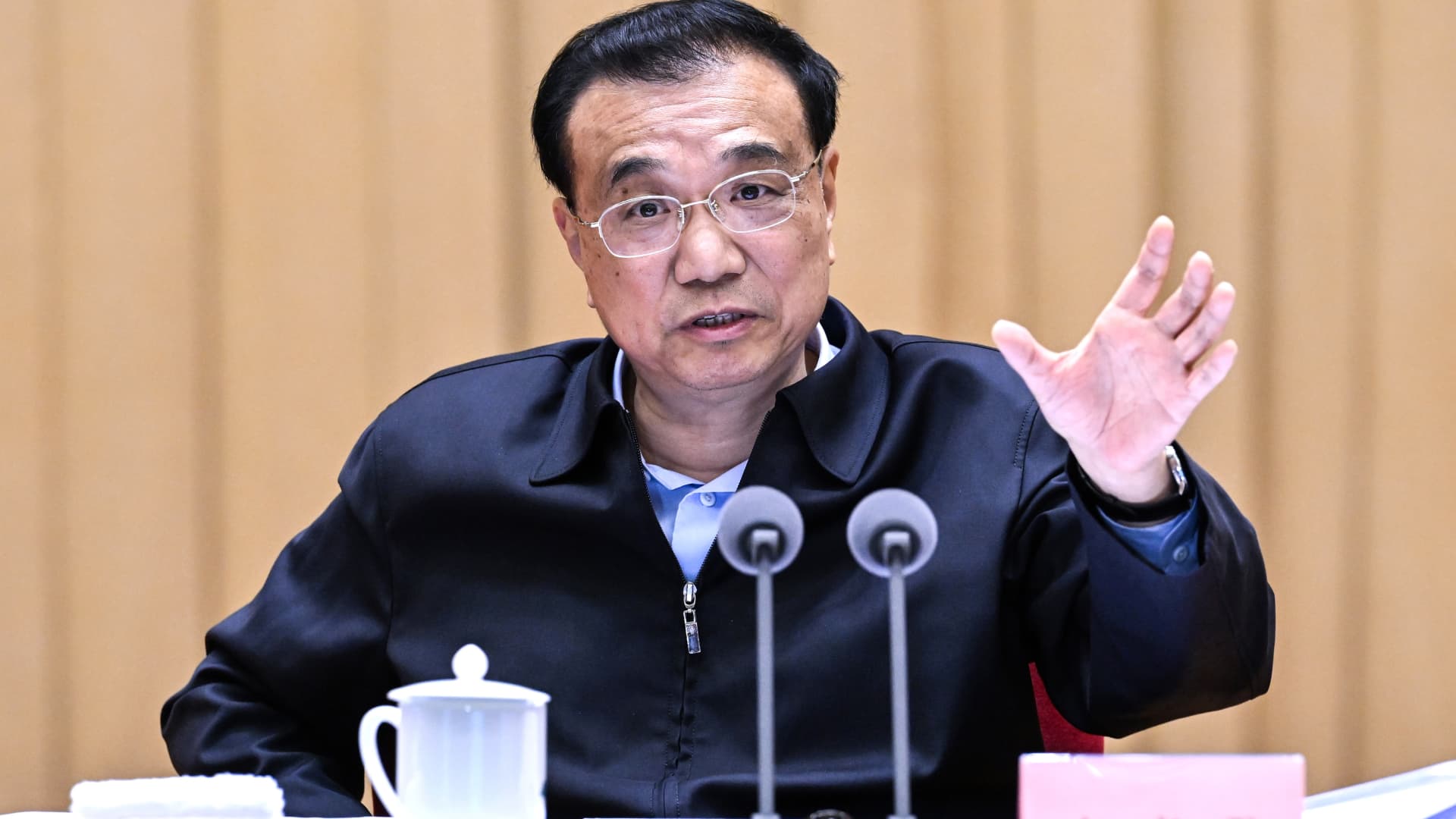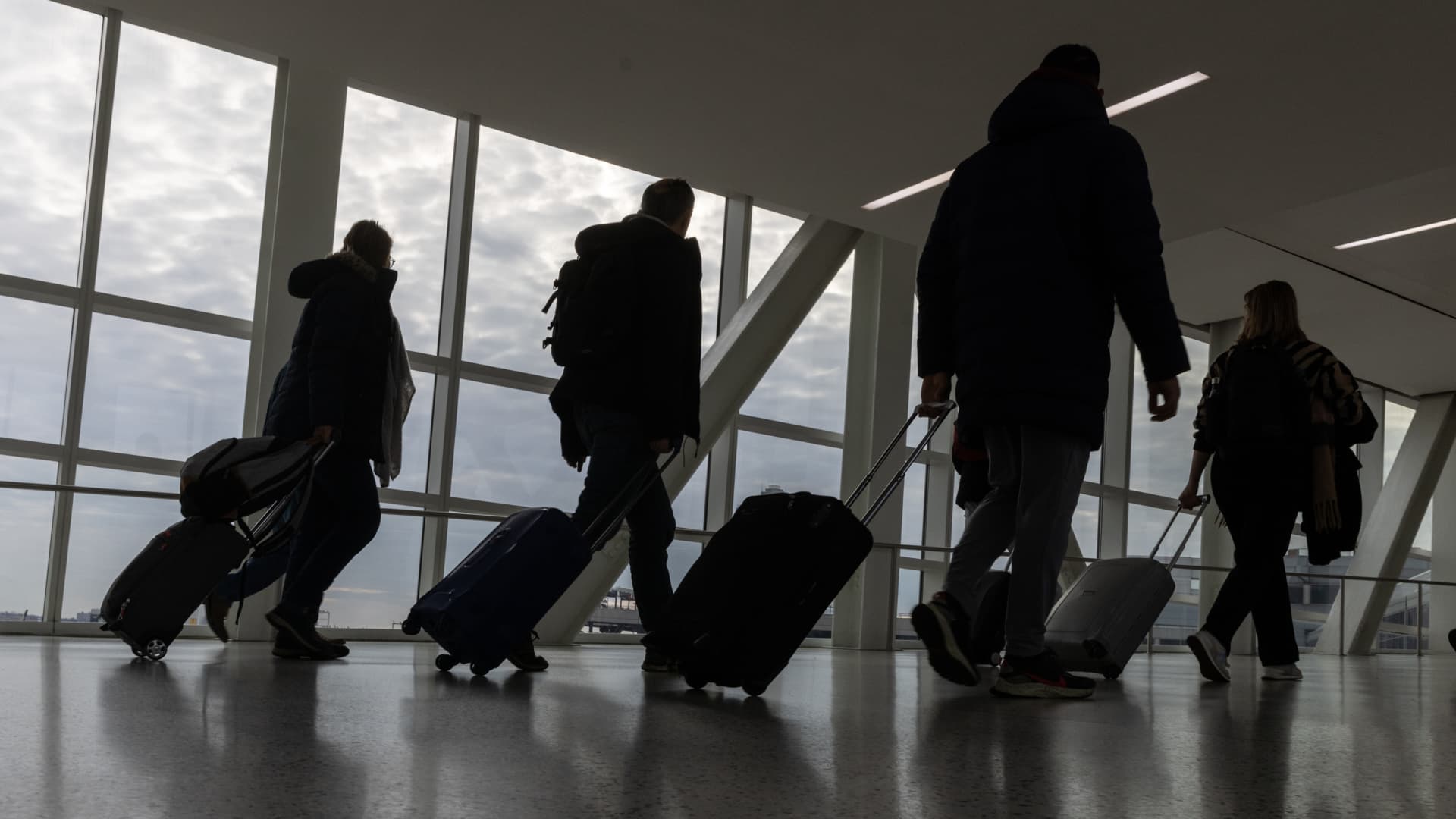
BEIJING — China held a rare nationwide meeting via teleconference Wednesday to bolster an economy battered by Covid.
The timing and scale indicated to analysts the level of urgency and current challenges for the country to achieve its target of around 5.5% GDP growth for the year.
“The difficulties, in some areas and to a certain degree, are even greater than the severe shock of the pandemic in 2020,” Premier Li Keqiang said during the videoconference, according to a CNBC translation of a Chinese-language state media report.
He warned how the economy is at a “critical point” for determining its full-year trajectory, and called on officials to “work hard” — for growth in the second quarter and a drop in unemployment, the report said.
Mainland China has tried to contain its worst Covid outbreak since early 2020 by using stringent stay-home orders and travel restrictions, most notably in the metropolis of Shanghai. Foreign companies have reported lost production and sales as a result.
Although state media did not specify how many people joined the teleconference, an evening news broadcast Wednesday showed large conference rooms of people from different provinces tuning into the meeting.
There hasn’t been such a meeting of this scale for years, and it’s unprecedented for one meeting to address so many levels of government at once, said Zong Liang, chief researcher at the Bank of China.
Such direct communication would likely improve implementation of policies to support the economy and control Covid, Zong said. He noted how policy is typically transmitted through several layers of government, and some locales have taken unnecessarily harsh measures.
For a sense of the country’s scale, China has 31 province-level regions, and more than 2,800 county-level ones. The information office for China’s State Council, the top executive body that Li heads, did not respond to a CNBC request for comment about Chinese financial media reports detailing the level of local governments attending.
“Chinese policymakers are in greater urgency to support the economy after the very weak activity growth in April, anemic recovery month-to-date in May, and continued increases in unemployment rates,” Goldman Sachs analysts wrote in a report Wednesday.
They described the teleconference as one with “provincial, city-level and county-level local government officials across the country.”
Li’s calls for achieving growth in the second quarter “may also be implicit acknowledgment that the ‘around 5.5%’ growth target set in early March this year is very challenging,” the analysts said.
The State Council is sending teams to 12 province-level regions Thursday to inspect policy implementation, state media said.
Covid’s continued impact
While the number of new Covid cases has declined in Shanghai, Beijing and other parts of China, analysts have noted how local authorities have been more cautious about relaxing Covid controls. Two more investment banks cut their forecast for China’s GDP this week, one as low as 3%.
Jianwei Xu, senior economist, greater China, Natixis, said it remains to be seen how effective the announced economic support measures will be.
“The key question is how to revive mobility in the economy,” Xu said during a webinar Thursday. “To lift the economy back to the pre-pandemic level probably needs more measures than announced yesterday because [of low] economic confidence.”
The official report of Wednesday’s nationwide teleconference did not mention China’s Covid controls, known as the “dynamic zero-Covid policy.”
A separate high-profile state media article earlier on Wednesday described how Chinese President Xi Jinping led the country to success with its dynamic zero-Covid policy, and noted China’s bright economic prospects.
Earlier in the week, the State Council announced many new measures for supporting growth.




